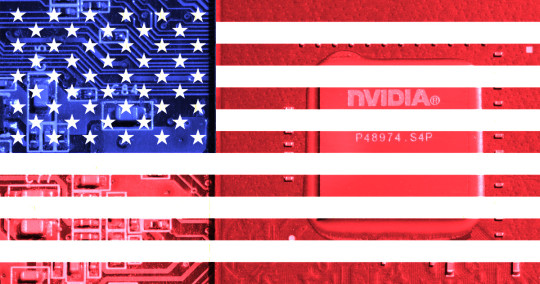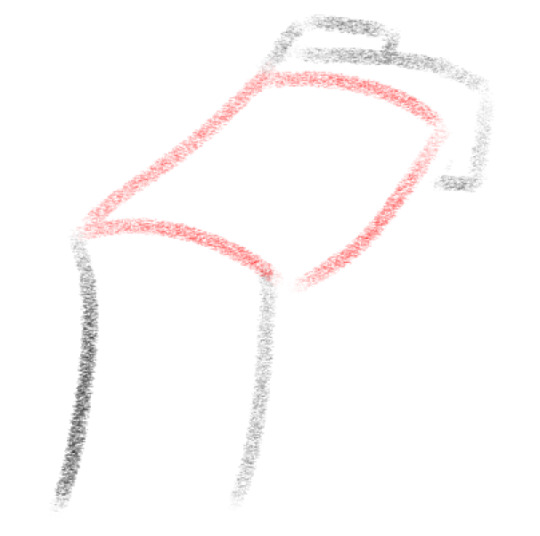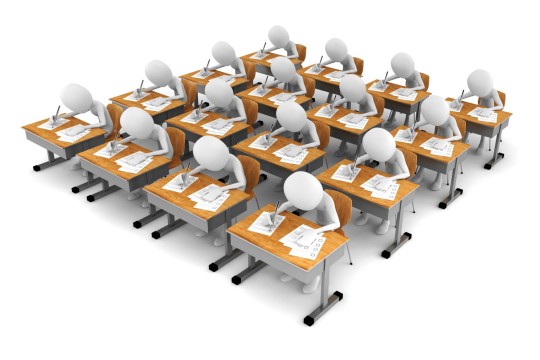#Chip Industry
Text
Chip industry under stress, with new US restrictions on sales to China
Chip industry under stress, with new U.S. restrictions on sales to China #chipindustry #semiconductors #China #US #Exports #technology
Chip Industry world over is under stress now, with new US restrictions on exports. Businesses all around the world started to consider the effects of broad U.S. restrictions on the export of chips and machinery for making chips to China.
In order to continue running its operations in China, the South Korean manufacturer of memory chips SK Hynix Inc. announced on Friday that it would apply for a…
View On WordPress
0 notes
Text
The CHIPS Act treats the symptoms, but not the causes

If you'd like an essay-formatted version of this post to read or share, here's a link to it on pluralistic.net, my surveillance-free, ad-free, tracker-free blog:
https://pluralistic.net/2024/02/07/farewell-mr-chips/#we-used-to-make-things

There's this great throwaway line in 1992's Sneakers, where Dan Aykroyd, playing a conspiracy-addled hacker/con-man, is feverishly telling Sydney Poitier (playing an ex-CIA spook) about a 1958 meeting Eisenhower had with aliens where Ike said, "hey, look, give us your technology, and we'll give you all the cow lips you want."
Poitier dismisses Aykroyd ("Don't listen to this man. He's certifiable"). We're meant to be on Poitier's side here, but I've always harbored some sympathy for Aykroyd in this scene.
That's because I often hear echoes of Aykroyd's theory in my own explanations of the esoteric bargains and plots that produced the world we're living in today. Of course, in my world, it's not presidents bargaining for alien technology in exchange for cow-lips – it's the world's wealthy nations bargaining to drop trade restrictions on the Global South in exchange for IP laws.
These bargains – which started as a series of bilateral and then multilateral agreements like NAFTA, and culminated in the WTO agreement of 1999 – were the most important step in the reordering of the world's economy around rent-extraction, cheap labor exploitation, and a brittle supply chain that is increasingly endangered by the polycrisis of climate and its handmaidens, like zoonotic plagues, water wars, and mass refugee migration.
Prior to the advent of "free trade," the world's rich countries fashioned debt into a whip-hand over poor, post-colonial nations. These countries had been bankrupted by their previous colonial owners, and the price of their freedom was punishing debts to the IMF and other rich-world institutions in exchange for loans to help these countries "develop."
Like all poor debtors, these countries were said to have gotten into their predicament through moral failure – they'd "lived beyond their means."
(When rich people get into debt, bankruptcy steps in to give them space to "restructure" according to their own plans. When poor people get into debt, bankruptcy strips them of nearly everything that might help them recover, brands them with a permanent scarlet letter, and subjects them to humiliating micro-management whose explicit message is that they are not competent to manage their own affairs):
https://pluralistic.net/2021/08/07/hr-4193/#shoppers-choice
So the poor debtor nations were ordered to "deregulate." They had to sell off their state assets, run their central banks according to the dictates of rich-world finance authorities, and reorient their production around supplying raw materials to rich countries, who would process these materials into finished goods for export back to the poor world.
Naturally, poor countries were not allowed to erect "trade barriers" that might erode the capacity of this North-South transfer of high-margin goods, but this was not the era of free trade. It wasn't the free trade era because, while the North-South transfer was largely unrestricted, the South-North transfer was subject to tight regulation in the rich world.
In other words, poor countries were expected to export, say, raw ore to the USA and reimport high-tech goods, with low tariffs in both directions. But if a poor country processed that ore domestically and made its own finished goods, the US would block those goods at the border, slapping them with high tariffs that made them more expensive than Made-in-the-USA equivalents.
The argument for this unidirectional trade was that the US – and other rich countries – had a strategic need to maintain their manufacturing industries as a hedge against future geopolitical events (war, but also pandemics, extreme weather) that might leave the rich world unable to provide for itself. This rationale had a key advantage: it was true.
A country that manages its own central bank can create as much of its own currency as it wants, and use that money to buy anything for sale in its own currency.
This may not be crucial while global markets are operating to the country's advantage (say, while the rest of the world is "willingly" pricing its raw materials in your country's currency), but when things go wrong – war, plague, weather – a country that can't make things is at the rest of the world's mercy.
If you had to choose between being a poor post-colonial nation that couldn't supply its own technological needs except by exporting raw materials to rich countries, and being a rich country that had both domestic manufacturing capacity and a steady supply of other countries' raw materials, you would choose the second, every time.
What's not to like?
Here's what.
The problem – from the perspective of America's ultra-wealthy – was that this arrangement gave the US workforce a lot of power. As US workers unionized, they were able to extract direct concessions from their employers through collective bargaining, and they could effectively lobby for universal worker protections, including a robust welfare state – in both state and federal legislatures. The US was better off as a whole, but the richest ten percent were much poorer than they could be if only they could smash worker power.
That's where free trade comes in. Notwithstanding racist nonsense about "primitive" countries, there's no intrinsic defect that stops the global south from doing high-tech manufacturing. If the rich world's corporate leaders were given free rein to sideline America's national security in favor of their own profits, they could certainly engineer the circumstances whereby poor countries would build sophisticated factories to replace the manufacturing facilities that sat behind the north's high tariff walls.
These poor-country factories could produce goods ever bit as valuable as the rich world's shops, but without the labor, environmental and financial regulations that constrained their owners' profits. They slavered for a business environment that let them kill workers; poison the air, land and water; and cheat the tax authorities with impunity.
For this plan to work, the wealthy needed to engineer changes in both the rich world and the poor world. Obviously, they would have to get rid of the rich world's tariff walls, which made it impossible to competitively import goods made in the global south, no matter how cheaply they were made.
But free trade wasn't just about deregulation in the north – it also required a whole slew of new, extremely onerous regulations in the global south. Corporations that relocated their manufacturing to poor – but nominally sovereign – countries needed to be sure that those countries wouldn't try to replicate the American plan of becoming actually sovereign, by exerting control over the means of production within their borders.
Recall that the American Revolution was inspired in large part by fury over the requirement to ship raw materials back to Mother England and then buy them back at huge markups after they'd been processed by English workers, to the enrichment of English aristocrats. Post-colonial America created new regulations (tariffs on goods from England), and – crucially – they also deregulated.
Specifically, post-revolutionary America abolished copyrights and patents for English persons and firms. That way, American manufacturers could produce sophisticated finished goods without paying rent to England's wealthy making those goods cheaper for American buyers, and American publishers could subsidize their editions of American authors' books by publishing English authors on the cheap, without the obligation to share profits with English publishers or English writers.
The surplus produced by ignoring the patents and copyrights of the English was divided (unequally) among American capitalists, workers, and shoppers. Wealthy Americans got richer, even as they paid their workers more and charged less for their products. This incubated a made-in-the-USA edition of the industrial revolution. It was so successful that the rest of the world – especially England – began importing American goods and literature, and then American publishers and manufacturers started to lean on their government to "respect" English claims, in order to secure bilateral protections for their inventions and books in English markets.
This was good for America, but it was terrible for English manufacturers. The US – a primitive, agricultural society – "stole" their inventions until they gained so much manufacturing capacity that the English public started to prefer American goods to English ones.
This was the thing that rich-world industrialists feared about free trade. Once you build your high-tech factories in the global south, what's to stop those people from simply copying your plans – or worse, seizing your factories! – and competing with you on a global scale? Some of these countries had nominally socialist governments that claimed to explicitly elevate the public good over the interests of the wealthy. And all of these countries had the same sprinkling of sociopaths who'd gladly see a million children maimed or the land poisoned for a buck – and these "entrepreneurs" had unbeatable advantages with their countries' political classes.
For globalization to work, it wasn't enough to deregulate the rich world – capitalists also had to regulate the poor world. Specifically, they had to get the poor world to adopt "IP" laws that would force them to willingly pay rent on things they could get for free: patents and other IP, even though it was in the short-term, medium-term, and long-term interests of both the nation and its politicians and its businesspeople.
Thus, the bargain that makes me sympathetic to Dan Aykroyd: not cow lips for alien tech; but free trade for IP law. When the WTO was steaming towards passage in the late 1990s, there was (rightly) a lot of emphasis on its deregulatory provisions: weakening of labor, environmental and financial laws in the poor world, and of tariffs in the rich world.
But in hindsight, we all kind of missed the main event: the TRIPS (Agreement on Trade-Related Aspects of Intellectual Property Rights). This actually started before the WTO treaty (it was part of the GATT, a predecessor to the WTO), but the WTO spread it to countries all over the world. Under the TRIPS, poor countries are required to honor the IP claims of rich countries, on pain of global sanction.
That was the plan: instead of paying American workers to make Apple computers, say, Apple could export the "IP" for Macs and iPhones to countries like China, and these countries would produce Apple products that were "designed in California, assembled in China." China would allow Apple to treat Chinese workers so badly that they routinely committed suicide, and would lock up or kill workers who tried to unionize. China would accept vast shipments of immortal, toxic e-waste. And China wouldn't let its entrepreneurs copy Apple's designs, be they software, schematics or trademarks.
Apple isn't the only company that pursued this strategy, but no company has executed it as successfully. It's not for nothing that Steve Jobs's hand-picked successor was Tim Cook, who oversaw the transfer of even the most exacting elements of Apple manufacturing to Chinese facilities, striking bargains with contractors like Foxconn that guaranteed that workers would be heavily – lethally! – surveilled and controlled to prevent the twin horrors of unionization and leaks.
For the first two decades of the WTO era, the most obvious problems with this arrangement was wage erosion (for American workers) and leakage (for the rich). China's "socialist" government was only too happy to help Foxconn imprison workers who demanded better wages and working conditions, but they were far more relaxed about knockoffs, be they fake iPods sold in market stalls or US trade secrets working their way into Huawei products.
These were problems for the American aristocracy, whose investments depended on China disciplining both Chinese workers and Chinese businesses. For the American people, leakage was a nothingburger. Apple's profits weren't shared with its workforce beyond the relatively small number of tech workers at its headquarters. The vast majority of Apple employees, who flogged iPhones and scrubbed the tilework in gleaming white stores across the nation, would get the same minimal (or even minimum) wage no matter how profitable Apple grew.
It wasn't until the pandemic that the other shoe dropped for the American public. The WTO arrangement – cow lips for alien technology – had produced a global system brittle supply chains composed entirely of weakest links. A pandemic, a war, a ship stuck in the Suez Canal or Houthi paramilitaries can cripple the entire system, perhaps indefinitely.
For two decades, we fought over globalization's effect on wages. We let our corporate masters trick us into thinking that China's "cheating" on IP was a problem for the average person. But the implications of globalization for American sovereignty and security were banished to the xenophobic right fringe, where they were mixed into the froth of Cold War 2.0 nonsense. The pandemic changed that, creating a coalition that is motivated by a complex and contradictory stew of racism, environmentalism, xenophobia, labor advocacy, patriotism, pragmatism, fear and hope.
Out of that stew emerged a new American political tendency, mostly associated with Bidenomics, but also claimed in various guises by the American right, through its America First wing. That tendency's most visible artifact is the CHIPS Act, through which the US government proposes to use policy and subsidies to bring high-tech manufacturing back to America's shores.
This week, the American Economic Liberties Project published "Reshoring and Restoring: CHIPS Implementation for a Competitive Semiconductor Industry," a fascinating, beautifully researched and detailed analysis of the CHIPS Act and the global high-tech manufacturing market, written by Todd Achilles, Erik Peinert and Daniel Rangel:
https://www.economicliberties.us/our-work/reshoring-and-restoring-chips-implementation-for-a-competitive-semiconductor-industry/#
Crucially, the report lays out the role that the weakening of antitrust, the dismantling of tariffs and the strengthening of IP played in the history of the current moment. The failure to enforce antitrust law allowed for monopolization at every stage of the semiconductor industry's supply-chain. The strengthening of IP and the weakening of tariffs encouraged the resulting monopolies to chase cheap labor overseas, confident that the US government would punish host countries that allowed their domestic entrepreneurs to use American designs without permission.
The result is a financialized, "capital light" semiconductor industry that has put all its eggs in one basket. For the most advanced chips ("leading-edge logic"), production works like this: American firms design a chip and send the design to Taiwan where TSMC foundry turns it into a chip. The chip is then shipped to one of a small number of companies in the poor world where they are assembled, packaged and tested (AMP) and sent to China to be integrated into a product.
Obsolete foundries get a second life in the commodity chip ("mature-node chips") market – these are the cheap chips that are shoveled into our cars and appliances and industrial systems.
Both of these systems are fundamentally broken. The advanced, "leading-edge" chips rely on geopolitically uncertain, heavily concentrated foundries. These foundries can be fully captured by their customers – as when Apple prepurchases the entire production capacity of the most advanced chips, denying both domestic and offshore competitors access to the newest computation.
Meanwhile, the less powerful, "mature node" chips command minuscule margins, and are often dumped into the market below cost, thanks to subsidies from countries hoping to protect their corner of the high-tech sector. This makes investment in low-power chips uncertain, leading to wild swings in cost, quality and availability of these workhorse chips.
The leading-edge chipmakers – Nvidia, Broadcom, Qualcomm, AMD, etc – have fully captured their markets. They like the status quo, and the CHIPS Act won't convince them to invest in onshore production. Why would they?
2022 was Broadcom's best year ever, not in spite of its supply-chain problems, but because of them. Those problems let Broadcom raise prices for a captive audience of customers, who the company strong-armed into exclusivity deals that ensured they had nowhere to turn. Qualcomm also profited handsomely from shortages, because its customers end up paying Qualcomm no matter where they buy, thanks to Qualcomm ensuring that its patents are integrated into global 4G and 5G standards.
That means that all standards-conforming products generate royalties for Qualcomm, and it also means that Qualcomm can decide which companies are allowed to compete with it, and which ones will be denied licenses to its patents. Both companies are under orders from the FTC to cut this out, and both companies ignore the FTC.
The brittleness of mature-node and leading-edge chips is not inevitable. Advanced memory chips (DRAM) roughly comparable in complexity to leading-edge chips, while analog-to-digital chips are as easily commodified as mature-node chips, and yet each has a robust and competitive supply chain, with both onshore and offshore producers. In contrast with leading-edge manufacturers (who have been visibly indifferent to the CHIPS incentives), memory chip manufacturers responded to the CHIPS Act by committing hundreds of billions of dollars to new on-shore production facilities.
Intel is a curious case: in a world of fabless leading-edge manufacturers, Intel stands out for making its own chips. But Intel is in a lot of trouble. Its advanced manufacturing plans keep foundering on cost overruns and delays. The company keeps losing money. But until recently, its management kept handing its shareholders billions in dividends and buybacks – a sign that Intel bosses assume that the US public will bail out its "national champion." It's not clear whether the CHIPS Act can save Intel, or whether financialization will continue to hollow out a once-dominant pioneer.
The CHIPS Act won't undo the concentration – and financialization – of the semiconductor industry. The industry has been awash in cheap money since the 2008 bailouts, and in just the past five years, US semiconductor monopolists have paid out $239b to shareholders in buybacks and dividends, enough to fund the CHIPS Act five times over. If you include Apple in that figure, the amount US corporations spent on shareholder returns instead of investing in capacity rises to $698b. Apple doesn't want a competitive market for chips. If Apple builds its own foundry, that just frees up capacity at TSMC that its competitors can use to improve their products.
The report has an enormous amount of accessible, well-organized detail on these markets, and it makes a set of key recommendations for improving the CHIPS Act and passing related legislation to ensure that the US can once again make its own microchips. These run a gamut from funding four new onshore foundries to requiring companies receiving CHIPS Act money to "dual-source" their foundries. They call for NIST and the CPO to ensure open licensing of key patents, and for aggressive policing of anti-dumping rules for cheap chips. They also seek a new law creating an "American Semiconductor Supply Chain Resiliency Fee" – a tariff on chips made offshore.
Fundamentally, these recommendations seek to end the outsourcing made possible by restrictive IP regimes, to undercut Wall Street's power to demand savings from offshoring, and to smash the market power of companies like Apple that make the brittleness of chip manufacturing into a feature, rather than a bug. This would include a return to previous antitrust rules, which limited companies' ability to leverage patents into standards, and to previous IP rules, which limited exclusive rights chip topography and design ("mask rights").
All of this will is likely to remove the constraints that stop poor countries from doing to America the same things that postcolonial America did to England – that is, it will usher in an era in which lots of countries make their own chips and other high-tech goods without paying rent to American companies. This is good! It's good for poor countries, who will have more autonomy to control their own technical destiny. It's also good for the world, creating resiliency in the high-tech manufacturing sector that we'll need as the polycrisis overwhelms various places with fire and flood and disease and war. Electrifying, solarizing and adapting the world for climate resilience is fundamentally incompatible with a brittle, highly concentrated tech sector.
Pluralizing high-tech production will make America less vulnerable to the gamesmanship of other countries – and it will also make the rest of the world less vulnerable to American bullying. As Henry Farrell and Abraham Newman describe so beautifully in their 2023 book Underground Empire, the American political establishment is keenly aware of how its chokepoints over global finance and manufacturing can be leveraged to advantage the US at the rest of the world's expense:
https://pluralistic.net/2023/10/10/weaponized-interdependence/#the-other-swifties
Look, I know that Eisenhower didn't trade cow-lips for alien technology – but our political and commercial elites really did trade national resiliency away for IP laws, and it's a bargain that screwed everyone, except the one percenters whose power and wealth have metastasized into a deadly cancer that threatens the country and the planet.

Image:
Mickael Courtiade (modified)
https://www.flickr.com/photos/197739384@N07/52703936652/
CC BY 2.0
https://creativecommons.org/licenses/by/2.0/
#pluralistic#chips act#ip#monopolies#antitrust#national security#industrial policy#american economic liberties project#tmsc#leading-edge#intel#mature node#lagging edge#foundries#fabless
251 notes
·
View notes
Text

I was replaying Hunter while streaming to some friends and it quickly went from a halfhearted "speedrun" to a casual playthrough but with kids now. So I doodled them
I name all my slugpups so we named them
- Light blue: Muffin, short for Blueberry Muffin
- Dark blue: Chip, short for Chocolate Chip
The food theme was not intended
#rain world#rw#rain world downpour#rw hunter#slugcat#slugpup#my art#I found Muffin in the first shelter of the wall (CC entrance) and Chip near the industrial shelter near the outskirts gate#I had Muffin for like a little over half the playthrough. and Chip for the final stretch#I get attached to companions in video games easily. we were all so sad when I had to leave them
49 notes
·
View notes
Photo


foodychannel on ig
#food#cookie dough#stim#sensory#satisfying#mypost#mygifs#brown#baking#mixing#stirring#chocolate chips#industrial#hands free#handsfree
103 notes
·
View notes
Note
Me when I fall asleep! Hi bestie, I just wanna know... How do you draw hands?? You have a certain style to it, that makes it look so shaped yet still fluid like... I can't describe it, but what's your process when drawing ✨hands✨ (...of tiIIIME– sorry.)
Huh! Well I guess I never really thought about it... I kinda just auto-pilot when I draw hands now that I think of it, so I don't really have a "process"
But I'll try to explain the best I can regardless!

Though not what I always do(sometimes I just wing it), I start with the usual shape base for the palm! Though sometimes I forget it's the palm and just use it as a base- and it's not a strict base! Don't gotta follow it 100%, if you gotta break it to make the pose work better, do it!
I always have an idea of where the fingers will be when I draw the base, so I don't really map em out at all like others would with the circle thumb trick n all. (nothing wrong with that trick of course, just never worked for me)
More under cut!!

During the sketch I usually just vaguely map out the fingers like this, like mittens! And honestly, more often than not I keep em like that in the final product, lmao.

Don't be afraid to merge together two or more fingers if it helps get the pose across better! Just make it obvious it's not one huge finger by adding bumps or a line where the fingers would usually split.

I always add a curve to the base/fingers to make the poses less stiff! No matter the pose, I try to avoid straight lines on the hands! Even the slightest curve is enough for me.
Though that doesn't always fit! Sometimes you gotta have a straight line or two, especially if it suits your style more! Nothing wrong with that.

Remember that the thumb and the index finger are attached! Try to make their lines flow together when possible.


Also, when I draw clutched hands, I make the index finger poke out a bit!

I don't usually draw hands with wrists attached now that I think about it(I like drawing long sleeves,,), but when I do, I make sure there's a clear dividing line between the wrist and the palm, so they don't look merged together!

Use reference pics when needed! Pinterest is usually my best bet for quick and easy hand ref pics of all kinds! Though you can also use your own hand! Whether by taking a pic or just posing it long enough.
You are your own free model
or something rejiagdlzf
BUT if it's something simpler, I usually just pose my free hand under my desk and feel it out/imagine the hand and go from there.
And of course, the thing everyone says...

Practice makes perfect!
Though I suppose if I'm being completely fair, I never really followed that and just drew for 7 years and hoped something happened...
I still struggle with hands ALLLL the time, but these are some things that I learned over the years that made em a bit easier!
I guess my number 1 tip would be to just- not stress about it! I don't pay attention much when I draw hands and just let my brain go off while I think about
I dunno
Hatstache or something LMAO
But uh! Yeah! I hope that helped and was at least a bit comprehensible! Hope I didn't forget anything-
If you need something a bit more specific then I could whip somethin up for ya real quick! Just ask!
^ This also goes for anyone reading- if I can be of any help, I'd love to try my best!
#My general rule of thumb for drawing anything is just: don't like it don't draw it#like how I don't draw necks!#took me years of failing to figure those fuckers out#until I landed on just- not drawing em!#not addressing Azzy specifically here= but just anybody reading in general#if you don't like drawing hands- simplify em to hell or just#go the animal crossing route!#you can make anything fit your style if you try hard enough- it's all about making art enjoyable for you! And that's not to say to not try-#and practice still! And of course that's not a very good strategy if you wanna be a professional in the industry one day#but if you're just drawing for fun- make it fun!#okay enough of that tangent-#Chip Chatter#my art#Chipillustrates#< new art tag#Chiptorial#like#like tu-torial#but#Chip-torial#haha..#ask response
28 notes
·
View notes
Text


attacked
#comic#mermaid#mermaidcomics#art#fish and chips#silly#sketch#doodle#pomegranate#musa#juniper has invested in industry grade waterproof lipstick#and it has paid off#mermaids#mermaid art#fantasy#fantasy art#webcomic#monstergirl#artist on tumblr
44 notes
·
View notes
Text

protectionism is back on the menu, boys.
#you love to see it#after decades of trade liberalism and the hollowing out of america's domestic industry#we're finally starting to see the government take some action to reverse course#i've been calling for this for years#good to see things are starting to finally move in that direction#from trump's tariffs and trade war with china to biden's chips act and the ukraine aid bills#and i'm regularly seeing news articles about the need to revitalize our shipbuilding industry#just a few weeks ago i saw that our secnav was in japanese shipyards#inviting investments/talent to come to american shipyards
4 notes
·
View notes
Text

Ok now I’m gonna play WoW here’s my new rogue hehee
#I was trying so hard for so long to separate myself from being a computer person but my entire family was apart of the industry even in#the 80’s computer chips are flowing through our veins#I have several boxes downstairs just full of outdated mismatched computer parts#broken laptops#ram sticks motherboards monitors BOXES of it I am just hoarding#it’s very bad …….. not if I am having fun though :)
2 notes
·
View notes
Text
i made more bc playlist making is so fun :3
#shut it frosty#toontown#toontown corporate clash#chainsaw consultant#gatekeeper#holly grayelle#chip revvington#these kinda feel like a wash compared 2 misty and mary tbh. but i tried my hardest ...#i wanted to put more industrial metal on chips pl but i dont listen to that genre so that was harder to do#Spotify
11 notes
·
View notes
Photo




This photo that came up in today’s Memories is from when the Hollywood, California band that I was in, The Loafin' Hyenas, played our first club gig at Raji’s, the epicenter of Hollywood underground bands at the time. I think this was 1988. At that point the band consisted of myself on vocals, former Cramps guitarist Click Mort, a wild cajun gal from Beaumont named Dionne Sparks (now Neva Trejo) on fiddle, & the former rhythm section from the band Blood on the Saddle, Ron Botelho on bass & Hermann Senac on drums. This is the lineup that recorded our first single “Scatter” (about Elvis’ chimpanzee) b/w “Move It!” (a reworking of one of my earlier songs from Tex & the Saddletramps days) that was one of the early releases from Long Gone John’s Sympathy For The Record Industry label (SFTRI 008).
And what a night it was. I don’t remember much from our performance, but I do remember who was there in the audience that night. In the second photo just to the left of the speaker cabinet (& darkly in the first photo) you can see original Gun Club bassist Rob "Graves" Ritter in sunglasses (yes, after dark AND indoors) sitting on the floor with his friend Tim Farris from the band Celebrity Skin. Rob was our favorite & the first bass player Click & I recruited for The Loafin' Hyenas & he jammed with us once when we were in the early stages of writing songs & putting the band together. But Rob was too busy at the time playing reunion gigs with 45 Grave & soon joining the band Thelonious Monster, to have enough time to devote to our project. He did return toward the end of The Loafin' Hyenas & contributed some beautiful bass lines to our only album, THE LOAFIN’ HYENAS on Patrick Mathè’s New Rose label out of France.
Also that night Click had invited his old bosses from The Cramps, Lux Interior & Poison Ivy Rorschach, who surprisingly showed up & crowded into the stuffy basement room at Raji’s where the bands played. I remember Lux pointing out in conversation afterwards in his humorous goofy manner, “Hey, we’re both lead singers with three letter names that end in ‘x’ Lux & Tex!”. I had invited Chip Kinman from Rank and File, a band that I admired & had opened shows for a couple of times back in Dallas at The Hot Klub, who also showed up.
The third photo is my still sweetie Karen Kritter & I in one of Raji’s booths. The final image is a flyer by Click Mort. Don't remember if this was the same night. But it would make sense since Lux produced the first Mad Daddy's LP...
#the loafin' hyenas#t. tex edwards#click mort#dionne sparks#ron botelho#hermann senac#long gone john#sympathy for the record industry#rob ritter#rob graves#45 grave#tim farris#celebrity skin#the cramps#the gun club#lux interior#poison ivy rorschach#patrick mathè#new rose records#chip kinman#rank and file#the hot klub#the mad daddy's#raji's#hollywood boulevard
11 notes
·
View notes
Text
doni have oc blorbo brainrot OR did i will oc blorbo into existence and he was our jasons deli delivery driver
You decide
#i asked if we were supposed to have chips w our sandwich tray the DRAMATIC GASP#if i had a nickel for every time i made an oc and i found theie spitting image in the food service industry a week later i would have 10c#which is not a lot but its weird that it happened twice
2 notes
·
View notes
Note
Don't know if this has been already asked, but what drawing platform do you use?
it was but i don't mind replying because this gets likley lost.
photoshop, with a wacom intuous 4 pen graphic tablet.
his name is waldemar he is over 10 years old :')
i know the Creative Cloud is costy and i mainly still have it for job related reasons. so i do recommend checking out programs like krita, or clip stuio paint or the affinity photo if you work on pc or laptop. they at least are free or cost less or don't work with a subscription program (for CSP you have to like buy the older version i think)
on touch tablet with a stylus pen you have so many options open. though i have only used ibis paint so far but like.... rarely. buts its nice (honestly directly seeing what my hand is drawing is disorienting. )
#chip!ask#fuck adobe CC!!!!#but ahhhhhhhh dang it de industry demands so things go more seamless#any client that comes with a invitation made in canva is such a nightmare to print#or to even export!#and i can then redoo the whole clients work...#its mindless work its nice sometimes but not always ;;;
11 notes
·
View notes
Text
So here's gold on my life. In two thousand one I was chipped by officer Yancy and sold to by a officer T. Grady badge #429 I reported it to kc Missouri
#chipped society victims of electronic industries#oils & minerals shell#trending#taylor swift#artists on tumblr#asexual#donald trump
2 notes
·
View notes
Text
The Crucial Role of Chips: Unveiling the Technological Advancements in China's 2023 College Entrance Examination
Introduction:

The 2023 College Entrance Examination in China witnessed an extraordinary leap in technological advancements, particularly in the field of chips. These tiny electronic components have become the backbone of modern society, revolutionizing various industries and empowering the development of cutting-edge technologies. In this blog post, we will explore the significance of chips in the context of the 2023 Chinese College Entrance Examination and the broader implications for China's technological landscape.
1. The Era of Smart Devices:

In recent years, China has witnessed a remarkable surge in the popularity of smart devices. Smartphones, tablets, and wearable gadgets have become an integral part of our daily lives. This trend heavily relies on the advancements in chip technology, specifically in terms of processing power, energy efficiency, and connectivity. The 2023 College Entrance Examination embraced this technological wave, as students were allowed to utilize electronic devices during certain sections of the exam, utilizing the power of chips to enhance their test-taking experience.
2. Empowering Artificial Intelligence:

Artificial Intelligence (AI) has emerged as a transformative force across various sectors, including education. In the 2023 College Entrance Examination, AI-powered systems were employed to analyze and evaluate students' answers, ensuring fair and accurate grading. The success of such systems largely depends on the performance of chips embedded within these AI frameworks. Advanced chips equipped with neural processing units (NPUs) can efficiently process massive amounts of data, accelerating AI algorithms and enabling real-time analysis.
3. The Rise of Edge Computing:

The proliferation of Internet of Things (IoT) devices has given rise to the concept of edge computing, where data processing occurs closer to the source rather than relying solely on centralized cloud servers. Chips play a pivotal role in enabling efficient edge computing, ensuring low latency and enhancing data security. In the context of the 2023 College Entrance Examination, edge computing facilitated seamless data transfer and real-time interaction between students' devices and the examination system, thereby enhancing efficiency and reliability.
4. Next-Generation Chip
To maintain China's position as a global technological leader, significant investments have been made in developing next-generation chip technologies. The 2023 College Entrance Examination served as a testing ground for these advancements, showcasing chips with enhanced performance, power efficiency, and miniaturization. Technologies such as 7-nanometer and 5-nanometer process nodes, stacked chip architectures, and novel materials like gallium nitride (GaN) contributed to the creation of highly advanced chips that powered the examination systems.
5. Addressing Challenges and Future Prospects:

Despite the remarkable progress in chip technology, challenges remain. The shortage of key raw materials, increasing energy consumption, and geopolitical considerations are among the obstacles that need to be addressed. However, China's commitment to research and development, collaboration with global partners, and strategic investments in semiconductor manufacturing capacity indicate a promising future for chip technology. The 2023 College Entrance Examination exemplified China's determination to leverage chips as a driving force behind its technological advancements.
Conclusion:
The 2023 Chinese College Entrance Examination highlighted the vital role of chips in enabling technological progress across various sectors. From empowering smart devices and AI systems to facilitating edge computing, chips have revolutionized the way we interact with technology. China's dedication to chip research, development, and manufacturing is shaping a future where chips will continue to be at the forefront of technological innovation. As we move forward, it is crucial to address challenges and seize opportunities, ensuring a prosperous era for chip technology in China and beyond.

#gaokao#electroniccomponents#icchip#semiconductor#semiconductor industry#semiconductor chips#semiconductor manufacturing
2 notes
·
View notes
Text
The chip industry expands its flavors for one person and it’s my friend who found philly cheesesteak pringles today. Thank you.
#chips#pringles#the chip industry#very cool and important#it’s all for this one friend of mine#who wants to try all the weird flavors#and i appreciate that
4 notes
·
View notes
Text
There’s only one thing keeping me together and it’s the Absolute History Youtube channel.
#haha my day could not get any worse!#so i have been driven to the extreme of rewatching the bbc victorian industrialization documentary again#brb crying into my chips and salsa while i learn about steam power for the hundredth time
6 notes
·
View notes